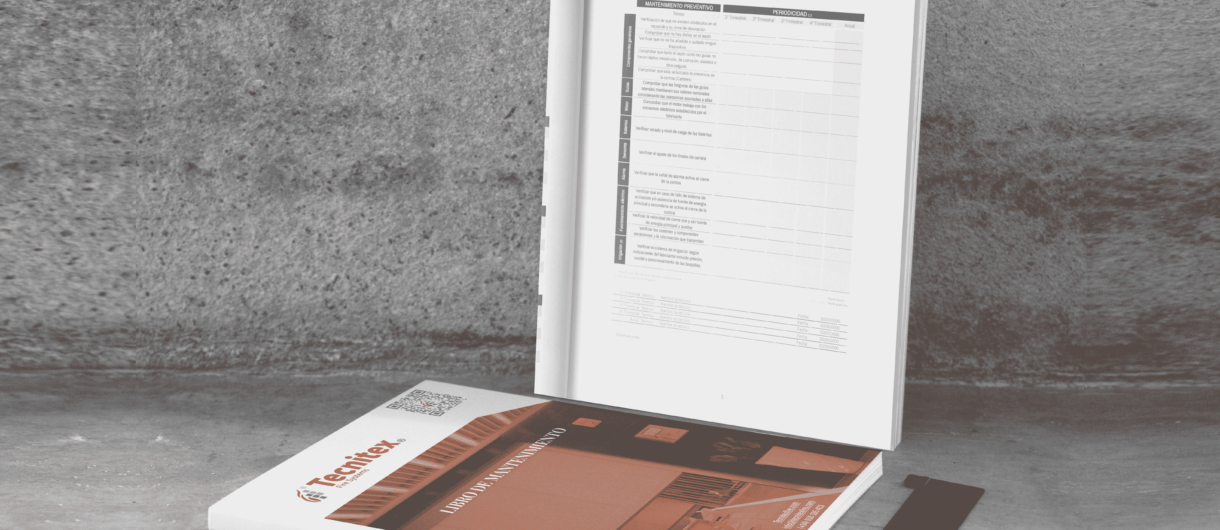
The importance of maintenance in firefighting systems
Text written by: Anabel Aguilera
From Tecnitex, we place special emphasis on the maintenance of innovative textile systems for fire protection. All equipment is required to carry out preventive actions periodically to guarantee its correct functioning. This is included in the UNE 23740-2 Standard prepared by CTN23 on fire safety.
Tecnitex has extensive knowledge of many regulations in different countries, which makes us prepared to be able to address these actions at a global level. When we talk about the maintainer in preventive operations, we are referring to highly qualified personnel, this can be the manufacturer or a specific technician, who can carry out all the checks and verifications of the system, allowing him to complete a detailed report, as well as the maintenance book. Maintenance, which must be kept by the owner or user for a period of 10 years and must be completed and signed as the maintenance is carried out from this work, a report is made with a result, which if unfavorable will require corrective actions to guarantee the functionality of the system.
When we should we perform maintenace?
Many clients ask us this question, and well, once the installation is completed, the useful life of the system begins and with it, its maintenance tasks. The standard indicates that we must execute these tasks annually by personnel with knowledge (competent personnel) of the systems and on a quarterly or semiannual basis, simpler tasks performed by the user themselves.
What training do competent personnel require?
Une 23740-2 establishes: the competent personnel in charge of carrying out the installation and/or maintenance operations of fire curtains, at least for advanced level tasks, must be adequately qualified. These personnel must have the necessary theoretical knowledge and enough practical experience to ensure correct installation and /or maintenance. Appropiate qualification must be obtained as follows:
- Initial theoretical training of 16 hours in fire curtains. It must contain at least the following
aspects:- Technical characteristics of fire curtains
- Management of necessary instruments and tools
- Application standard
- Applicable legistlation
- Minimum practical experience of 3 months in the installation and/or maintenance of fire curtains.
- Specific knowledge of the instructions of the product to install and/or maintain.
- Training in recycling of 8 hours accumulated in periods of 2 years.
Both the minimum initial training and periodic updating must be accredited by means of a certificate of completion in courses given by business associations in the sector or by manufacturers of fire curtains, as appropriate.
What happens when the personnel who perform maintenance are not suitable?
Maintenance carried out by personnel who do not have knowledge about the systems is synonymous with failure. Fire and smoke curtains are specific products that not everyone can handle. We have observed that operations carried out by untrained personnel can cause irreversible failures in the curtain such as problems in the electronics, motor, mechanics, etc… Resulting in an unsafe scenario in addition to possible economic damage.
In Spain, unlike other countries, we are not giving the enough importance that preventive care requires. We can observe this when we encounter systems in which a correct maintenance action has never been carried out, unfavorable equipment has been left for a period of time without any type of control or the maintenance reports do not reflect the minimum required control verifications by UNE 253740-2.
Currently, and apart from specific requirements of some communities, there is no regulation that includes the obligation to audit by a notified body or competent personnel the firefighting equipment installed in the projects and verify that they meet the indicated requirements, unlike other countries in which these controls are required. We can talk about Belgium, where in maintenance reviews or control audits, if a percentage of unfavorable equipment is found, the replacement of the entire project is directly ordered, since it is considered dangerous.
Other countries such as Norway, have the role of “technical firefighter”, who, in the event of deficiency in the equipment, is responsible for ensuring the safety of the site where the system is located, until it is repaired or replaced.
In conclusion, the lack of control over maintenance operations translates into a high risk for the building and people, causing the main safety factor to not be met. Many times, we are not aware of what this would mean if a fire started.
“Remember the importance of maintaining your systems. Staying with an unfavorable team is
having an insecure place”>